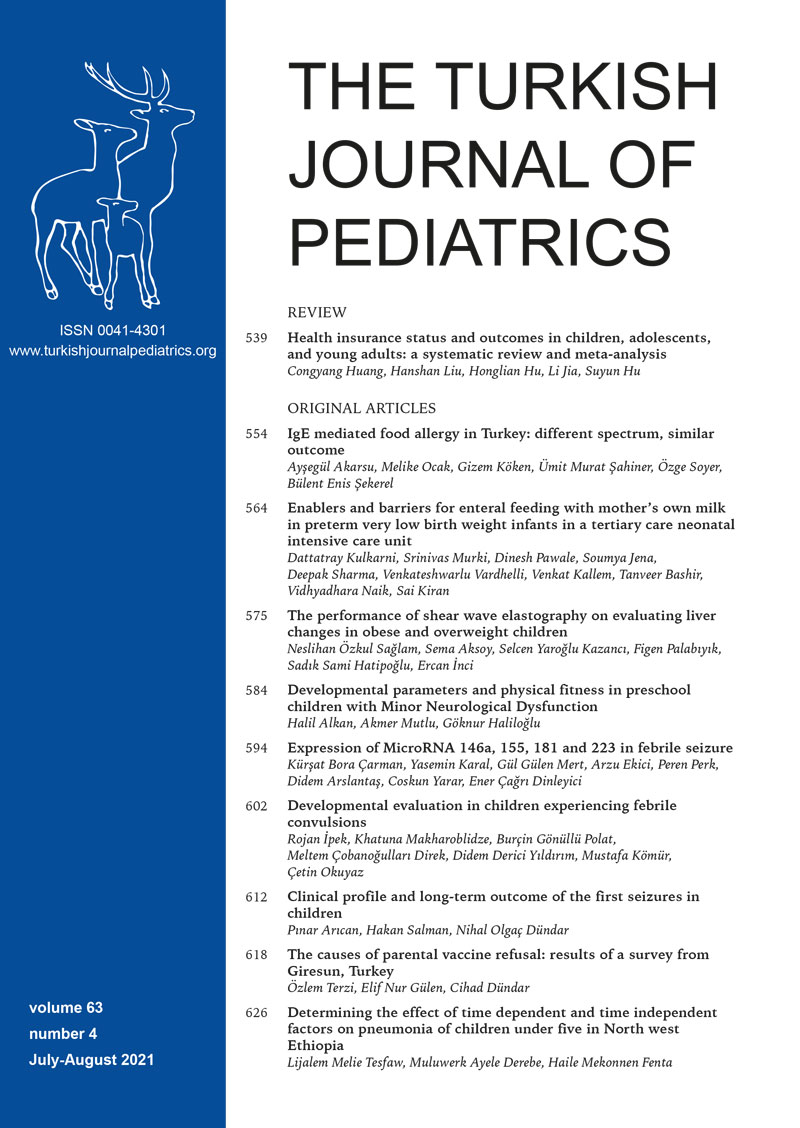Abstract
Background. Food allergies (FAs) potentially differ across cultures.
Methods. All medical records of 534 children and adolescents with IgE-mediated FA over a 5-year period were reviewed to document the regional characteristics with regard to spectrum and outcome.
Results. According to their last visit, the most common FAs were tree nuts (TNs) (52.4%), cow`s milk (27.3%), seeds (24.7%), egg white (23.2%) and peanuts (14.9%). Hazelnut and Anacardia nuts were the most common etiologies for TN allergies, whereas lentils and chickpeas for legumes and sesame and pumpkin seed for seeds were most common, respectively. TN allergy was in first place in school-age children (55.3%) and adolescents (57.1%) while in the second place in preschoolers (57.7%) after egg white (60%). Of these 534 children, 59.2% had at least one resolved FA (mainly egg white, cow`s milk) and 21% had no residual FA during the study period. Emerging FAs (fish, shellfish, fruit, TN and seed) after the age of 3 years was reported in 94 children. The prevalence of current asthma (22.3%, 38.2%, 40%) and allergic rhinitis (11.6%, 45.2%, 60%) increased, while current atopic dermatitis (17.5%, 8.6%, 8,6%) decreased in preschoolers, school age children and adolescents, respectively.
Conclusions. The FA spectrum of Turkish children and adolescents differs from many regions of the world with high rates of TN (hazelnut, Anacardia nuts), seed (sesame, pumpkin seed) and lentils, and low rates of soy, peanut and seafood allergies. However, resolution, emergence and persistence of allergies and comorbidities are similar, which points to the limited role of the environment in the outcome.
Keywords: allergic rhinitis, asthma, atopic dermatitis, food allergy, prevalence
Copyright and license
Copyright © 2021 The Author(s). This is an open access article distributed under the Creative Commons Attribution License (CC BY), which permits unrestricted use, distribution, and reproduction in any medium or format, provided the original work is properly cited.














